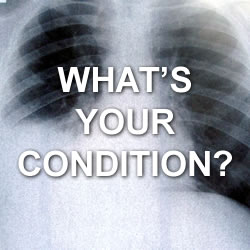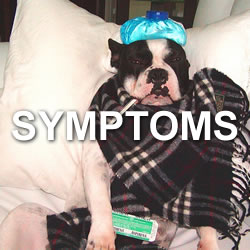Imaging
Behavior is the mirror in which everyone shows their image - Johann Wolfgang von Goethe

image by: Daniel Sone
HWN Recommends
Radiation Dose in X-Ray and CT Exams
Following are comparisons of effective radiation dose in adults with background radiation exposure for several radiological procedures...
| For this procedure: | * An adult’s approximate effective radiation dose is: | Comparable to natural background radiation for: |
|---|---|---|
| ABDOMINAL REGION: | ||
| Computed Tomography (CT)-Abdomen and Pelvis | 10 mSv | |
Resources
 Having a scan? Here’s how the different types work and what they can find
Having a scan? Here’s how the different types work and what they can find
Our first introduction to medical imaging occurs when a doctor asks us to have an x-ray or scan to investigate an injury, pain or symptom that cannot otherwise be explained. We can be overwhelmed when we see how complicated, large and noisy some of the equipment is. Many different types of examinations can be performed to investigate conditions and injuries. Sometimes more than one of the following medical imaging techniques is required to enable doctors to offer the best advice on treatment options.
Radiation Protection of Patients
IAEA has been on fore-front to promote development of methodologies to track radiation exposure of patients so as to have radiation exposure history of individual.
Airport Scanners: Trading One Hazard for Another?
One of the 'hottest' issues in worldwide air travel security is the use of the so-called full body scanners. Are airport scanners safe or not?
Cancer Screening: Life-Savers or Expensive Luxury?
As health expenditures soar cancer screening has come under scrutiny especially when it comes to mammograms.
F.D.A. to Increase Oversight of Medical Radiation
In making the announcement, the F.D.A. said it hoped to reduce unnecessary radiation exposure from three medical imaging procedures: CT scans, which provide three-dimensional images; nuclear medicine studies, in which patients are given a radioactive substance and doctors watch it move through the body; and fluoroscopies, in which a radiation-emitting device provides a continuous internal image on a monitor.
Imaging Centers: Useful or Harmful?
There needs to be more emphasis on emerging technology that limits radiation hazards, such as some of the newer laser CT techniques, as opposed to placing imaging centers on every corner. It's time for the newer screening techniques to be the norm.
Imaging Studies - Our Children are Glowing
Children have ten times the risk for CT Scan caused cancer compared to adults. Ultrasounds and MRIs, whenever appropriate, should be substituted especially in the younger population.
Is There an Alternative to Mammograms
Mammography can be an inherently lousy screening test for breast cancer. Women deserve better! Now is an opportune time to replace this outmoded screening tool. The only problem is there is nothing on the horizon...
Overkill
An avalanche of unnecessary medical care is harming patients physically and financially. What can we do about it?
The Promise Ahead for Radiology
We know where imaging has been. We think it’s going to a better place. But exactly when it will get there and what it will look like when it arrives are tough to say. We think the new imaging is going to make radiologists very relevant. It’s going to make medicine more efficient. And it’s going to make patient care better.
 Radiation Dose in X-Ray and CT Exams
Radiation Dose in X-Ray and CT Exams
Following are comparisons of effective radiation dose in adults with background radiation exposure for several radiological procedures...
Image Wisely
Image Wisely offers resources and information to radiologists, medical physicists, other imaging practitioners, and patients.
Radiation Dosage Chart
Risk of harm is dependent on both the dose and the dose rate (the time the body is exposed to that dose). So a dose of 1,000 mSv over an hour is considerably more damaging than a dose of 1,000 mSv over a year.
Diagnostic Imaging
Diagnostic Imaging offers news, case studies, and commentary for radiologists and imaging professionals. Radiology and medicine are changing rapidly and we make sure our readers are up-to-date on relevant trends, technology, legislation, and general perception about the field.
Image Gently
The Image Gently Alliance is a coalition of health care organizations dedicated to providing safe, high quality pediatric imaging worldwide. The primary objective of the Alliance is to raise awareness in the imaging community of the need to adjust radiation dose when imaging children. The ultimate goal of the Alliance is to change practice.
InsideRadiology
The mission of InsideRadiology is to be the leading Australasian resource on clinical radiology tests, procedures, and interventions, providing up-to-date information to health consumers and health professionals and improving doctor-patient communication. InsideRadiology has two key audiences: health consumers (patients, their families and friends); and health professionals (referring clinicians and allied health professionals).
XrayRisk.com
While the need for education in this area has clearly been established, there are no widely available resources that provide information to both patients and health care providers about the increased risk of cancer from medical imaging. X-RayRisk.com is an educational website that focuses on estimating this risk. One of the site’s main features is a web based calculator that allows users to track their imaging history and estimate their personal risk, while providing answers to frequently asked questions.

Introducing Stitches!
Your Path to Meaningful Connections in the World of Health and Medicine
Connect, Collaborate, and Engage!
Coming Soon - Stitches, the innovative chat app from the creators of HWN. Join meaningful conversations on health and medical topics. Share text, images, and videos seamlessly. Connect directly within HWN's topic pages and articles.















